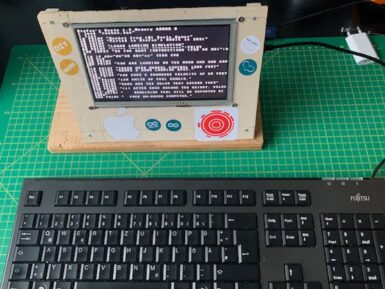
Ring with 60 RGB WS2812 LEDs and integrated driver
Neopixel ring with 60 RGB LEDs that can be individually controlled, each of which can produce 256 shades of its color, resulting in a total of 16,777,216 colors.
Overview
The data channel for communication is a One-Wire serial type and can be controlled with microcontrollers like Arduino.
You can set the refresh frequency as desired to make certain light effects imperceptible. Multiple rings can be cascaded together to create various effects.
Tech specs
Power supply: 5 Vdc.
Conformities
Get Inspired

Lets make a programmable guitar pedal, using all the power from the Arduino DUE board with 12 bits ADCs, DACs and RAM memory.

As a continuation from his previous Arduino BASIC interpreter project, Stefan Lenz wanted to take things a step further by recreating a home computer from the 1980s with an Arduino Due board and just a few other components. His system combines a 7" 800 x 480 TFT screen, an SD card reader acting as the disk, and a PS/2 port for connecting a keyboard. He began by mounting the TFT display shield to the Arduino by slotting it in place and inserting an SD card to function as the external disk since floppy drives have long since disappeared and would be far too unwieldy. After soldering some additional wires to the SPI and I2C bus pins, a level shifter was attached to two digital pins that serve as the data and clock lines for the external PS/2 socket. Most of the “magic” in this project comes from the programming which handles everything from reading inputs to showing graphics on the LCD and even interfacing with other peripherals over either I2C or SPI. All of the code needed for this retro home computer can be found here in Lenz’s tinybasic repository, which contains a plethora of example projects and demonstrations that can be run/modified.








